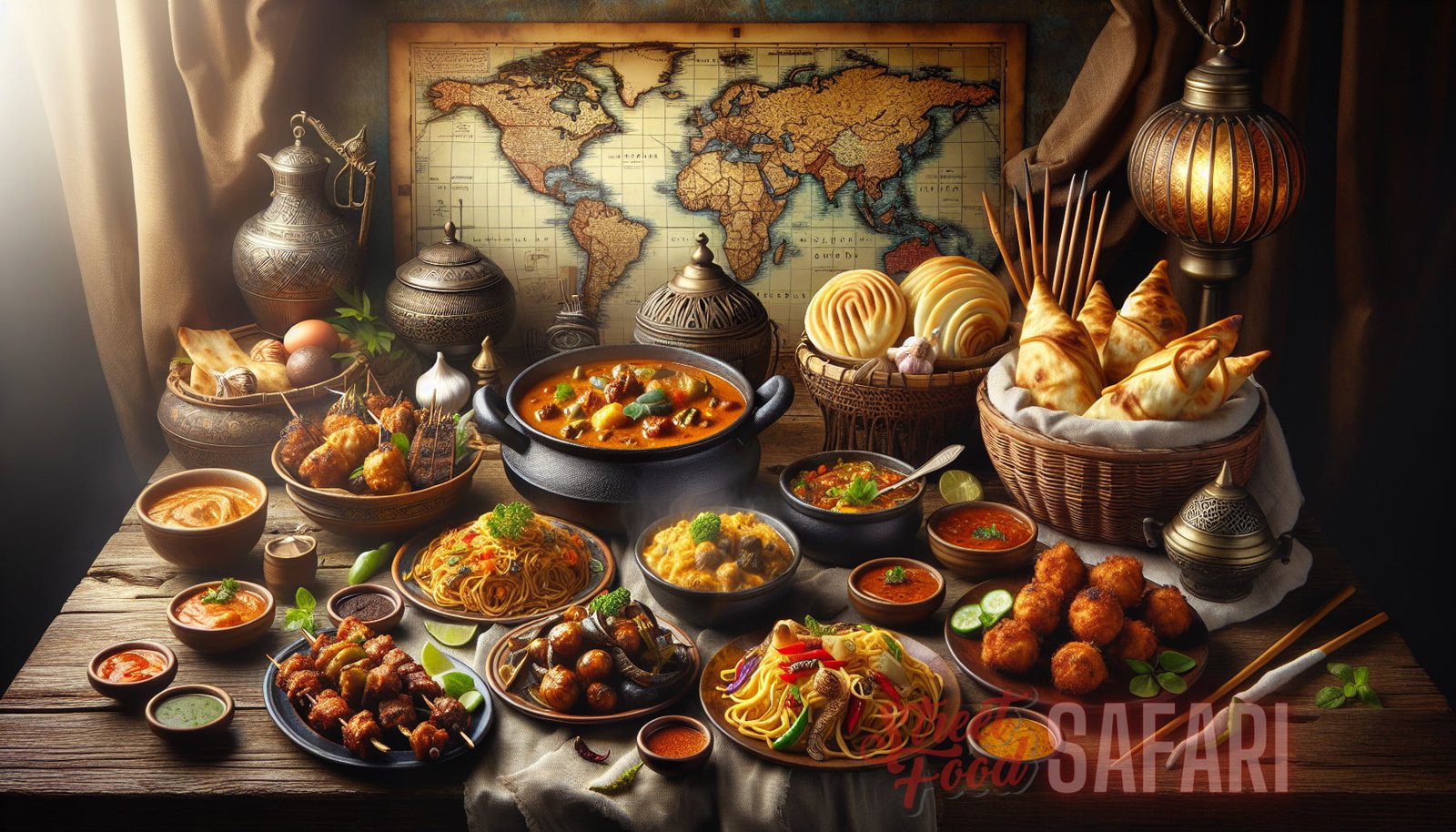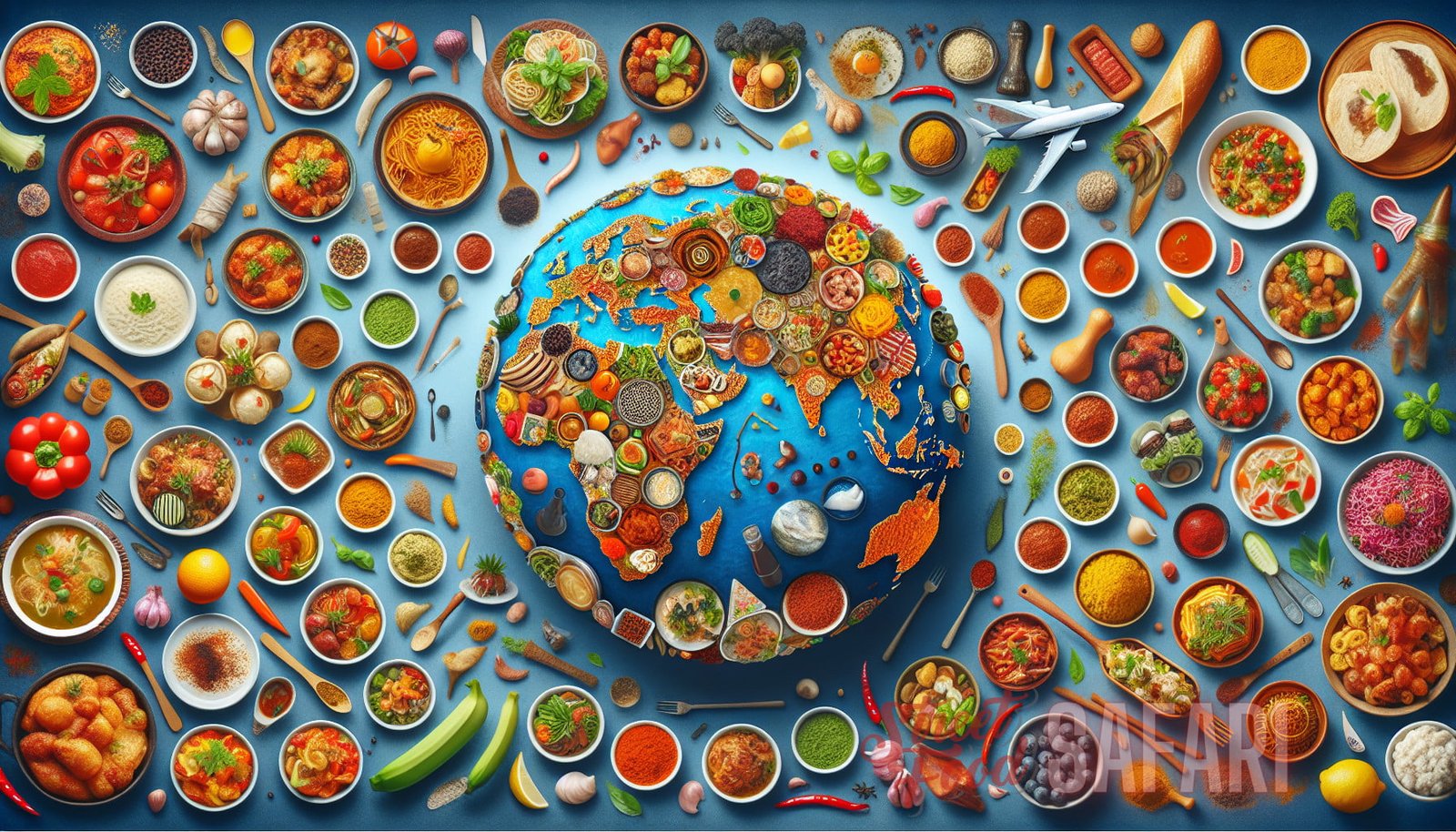Navigating Nutritional Diversity: A Scientific Exploration of Health-Conscious Eating in Global Travel
Navigating Nutritional Diversity: A Scientific Exploration of Health-Conscious Eating in Global Travel
As our globe shrinks with increasing connectivity, the opportunity to travel and experience diverse cultures has expanded exponentially. However, maintaining a health-conscious diet while immersing oneself in global cuisine remains a challenge for many travelers. This comprehensive guide is designed to aid health-conscious travelers in navigating the array of nutritional offerings around the world without compromising their dietary principles. Here, we delve into the science of nutrition, practical strategies, and cultural insights to ensure your culinary journey is both enriching and healthy.
Understanding Nutritional Diversity
The term nutritional diversity encapsulates the variety of dietary patterns and foods consumed by different cultures around the world. From the Mediterranean diet’s heart-healthy olive oil to the protein-rich pulses in Indian cuisine, every culture has developed unique nutritional habits influenced by geography, history, and tradition.
The Science Behind Nutritional Diversity
Scientific research underscores the health benefits of diverse diets. For instance, the Mediterranean diet is lauded for its cardiovascular benefits, largely due to its high intake of fruits, vegetables, whole grains, and healthy fats. On the other hand, traditional Asian diets, rich in vegetables, fish, and fermented products like kimchi, are associated with lower rates of chronic diseases.
Incorporating a variety of foods ensures a broad spectrum of essential nutrients, aiding in overall health and preventing nutrient deficiencies. For example, while Western diets are often rich in protein and fat, they might lack the fiber and antioxidants prevalent in many plant-forward diets from around the world.
Challenges of Eating Healthy While Traveling
Despite the abundant nutritional benefits of global cuisines, travelers often face challenges in maintaining their dietary preferences and health goals. Understanding these challenges can help in devising effective strategies for staying healthy on the go.
Common Challenges
- Availability of Healthy Options: Not all regions prioritize health-conscious foods, making it difficult for travelers to find suitable options.
- Food Safety: Ensuring the safety of street foods and local delicacies is crucial to avoid foodborne illnesses.
- Cultural Barriers: Language differences and unfamiliarity with local customs can complicate dietary requests and create misunderstandings.
- Consistency: Maintaining a regular eating schedule and balanced meals can be challenging due to travel itineraries and time zone changes.
Practical Strategies for Health-Conscious Eating Abroad
Travelers can employ a variety of strategies to ensure their nutritional needs are met while exploring new destinations. These practical tips cover planning, dining out, and food safety to help maintain a healthy diet during global travels.
Preparation and Research
Preparation is key to navigating uncharted culinary territories. Begin by researching your destination’s food culture and common dietary practices. This article on global cuisine provides insightful overviews of different food traditions.
Consider the following steps:
- Read Up: Familiarize yourself with local foods and their nutritional profiles. Understanding common ingredients and cooking methods will help you make informed choices.
- Identify Markets and Stores: Locate grocery stores, farmers’ markets, and health food shops near your accommodation. These places are often treasure troves of fresh, local produce.
- Pack Essentials: Bring non-perishable healthy snacks like nuts, dried fruits, and whole-grain crackers. These can tide you over when healthy options are scarce.
Eating Out: Tips and Tricks
Dining out is often an integral part of the travel experience, but it can pose challenges for the health-conscious eater. Here are some strategies to help you make the most of your dining experiences without compromising your diet:
- Menu Investigation: Before heading to a restaurant, check their menu online if possible. Look for dishes that align with your dietary preferences.
- Ask Questions: Don’t hesitate to ask about how dishes are prepared or to request modifications. Most establishments are willing to accommodate dietary needs.
- Portion Control: Share dishes or opt for smaller portions to avoid overeating. Many cuisines offer dishes in smaller tapas-style servings, which are perfect for sampling without excess.
- Healthy Substitutions: Request whole grains instead of refined grains, and opt for steamed or grilled options rather than fried or sautéed.
Maintaining Food Safety
Food safety is paramount, especially when sampling local street foods or dining in regions with different food safety standards. Here are some tips to minimize the risk of foodborne illnesses:
- Street Food Savvy: Opt for stalls with high turnover, as freshly prepared food is less likely to harbor pathogens. Look for vendors who observe good hygiene practices, such as using gloves or tongs.
- Clean Water: Always use bottled or purified water for drinking and brushing teeth. Avoid ice in drinks if the water quality is dubious.
- Peel and Cook: Foods that are peeled or thoroughly cooked are generally safer. Be cautious with raw or undercooked items.
- Probiotics: Consider taking probiotics to boost your gut health and immunity during your travels.
Exploring Global Cuisines with a Nutritional Lens
Every region offers unique culinary treasures that can enhance both your palate and your health. By understanding the nutritional benefits of different global cuisines, you can make informed choices that align with your dietary goals.
Mediterranean Cuisine
Mediterranean cuisine is renowned for its heart-healthy properties. Staples such as olive oil, nuts, fresh vegetables, lean proteins, and whole grains form the foundation of this diet. The use of herbs and spices not only enhances flavor but also provides additional antioxidants and anti-inflammatory benefits.
Nutritional Highlights:
- Healthy Fats: Olive oil, a predominant cooking fat in Mediterranean dishes, is rich in monounsaturated fats, which are associated with reduced risk of heart disease.
- Antioxidants: Abundance of fruits and vegetables provides a wealth of vitamins, minerals, and phytochemicals.
- Lean Proteins: The diet includes moderate amounts of fish, which are high in omega-3 fatty acids.
Asian Cuisine
Asian cuisines, including those from China, Japan, Korea, and Southeast Asia, emphasize a balance of flavors and nutrients. Typically, these diets are high in vegetables, fish, rice, and fermented products, contributing to their healthful nature.
Nutritional Highlights:
- Low in Red Meat: Asian diets often rely more on seafood and plant-based proteins, which are linked with lower risk of chronic diseases.
- Fermented Foods: Products like kimchi, miso, and natto provide probiotics that promote gut health.
- Abundant in Vegetables: The frequent inclusion of vegetables ensures a high intake of fiber, vitamins, and minerals.

Indian Cuisine
Indian cuisine offers a diverse array of vegetarian and non-vegetarian options, spiced with a variety of herbs and spices that provide both flavor and health benefits. Lentils, beans, and whole grains form the cornerstone of many Indian meals.
Nutritional Highlights:
- Plant-Based Proteins: Lentils, chickpeas, and beans are rich in protein, iron, and fiber.
- Herbs and Spices: Turmeric, ginger, and garlic have anti-inflammatory properties and are used liberally in Indian cooking.
- Dairy Products: Foods like yogurt and paneer (a type of cheese) offer calcium and probiotics.
Latin American Cuisine
Latin American cuisine is diverse, incorporating influences from indigenous cultures, European colonizers, and African slaves. Staples include corn, beans, rice, fresh vegetables, and a variety of meats.
Nutritional Highlights:
- High Fiber: Corn and beans provide a high amount of dietary fiber, essential for digestive health.
- Lean Meat Options: Many dishes feature lean meats such as chicken and fish.
- Vibrant Vegetables: Foods like tomatoes, bell peppers, and avocados are nutrient-dense and full of vitamins and antioxidants.
Incorporating Local Superfoods
Local superfoods are nutrient-rich delicacies specific to certain regions that can be beneficial additions to a health-conscious diet. They offer unique vitamins, minerals, and phytochemicals that contribute to overall well-being.
Mediterranean Superfoods
Some Mediterranean superfoods include:
- Olive Oil: Rich in monounsaturated fats and antioxidants.
- Chia Seeds: High in omega-3 fatty acids, fiber, and protein.
- Pomegranate: Packed with antioxidants and vitamins C and K.
Asian Superfoods
Some Asian superfoods include:
- Matcha Green Tea: High in antioxidants and catechins, which promote overall health.
- Kimchi: Fermented cabbage rich in probiotics and vitamins A, B, and C.
- Seaweed: Contains iodine, vitamins, and minerals essential for thyroid function and overall health.
Indian Superfoods
Some Indian superfoods include:
- Turmeric: Contains curcumin, which has anti-inflammatory and antioxidant properties.
- Moringa: Rich in vitamins, minerals, and phytochemicals that support overall health.
- Ghee: Clarified butter high in healthy fats and vitamins A, D, and E.
Latin American Superfoods
Some Latin American superfoods include:
- Quinoa: A high-protein grain rich in essential amino acids.
- Cacao: Contains flavonoids and antioxidants that support heart health.
- Acai Berries: Packed with antioxidants, fiber, and heart-healthy fats.
Staying Active and Hydrated
Nutrition is only one part of the equation when it comes to maintaining health while traveling. Staying active and hydrated is equally important to ensure overall wellness during your adventures.
Staying Active
Incorporate physical activity into your daily routine while traveling. This could be through walking tours, hiking, swimming, or even participating in local recreation activities. Staying active not only helps in managing weight but also boosts your mood and energy levels.
Hydration Tips
Proper hydration is crucial, especially in hot climates or when engaging in physical activities. Carry a reusable water bottle, and make sure to stay hydrated throughout your travels. This can help prevent dehydration, combat fatigue, and maintain regular bodily functions.
Embracing the Experience
Finally, while maintaining a health-conscious diet is important, it’s also crucial to embrace the cultural experience of travel. Allow yourself the flexibility to enjoy local delicacies and traditional foods. Balance and moderation are key. By making informed choices most of the time, you’ll be able to indulge occasionally without straying from your dietary principles.
Global travel offers an unparalleled opportunity to explore new cultures, flavors, and nutritional practices. By utilizing the strategies outlined in this article, you can navigate the nutritional diversity of global cuisines while maintaining your health and wellbeing. For more insights into authentic global cuisine, check out this article.
Conclusion
Navigating the nutritional landscape of global travel requires knowledge, preparation, and flexibility. By understanding the health benefits of various international cuisines, planning ahead, and making informed dining choices, travelers can maintain health-conscious eating habits without missing out on the richness of culinary experiences. Embrace the journey with these strategies, and enjoy the bounty of the world’s nutritional diversity while maintaining your health and wellness.



